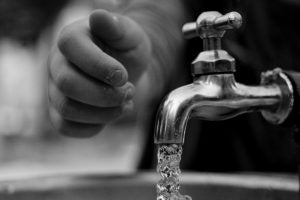
Revised national standard tightens lead leaching limits for new drinking water fixtures
Tom Neltner, J.D. is the Chemicals Policy Director
In September 2020, the joint committee posted an announcement on its revised NSF/ANSI/CAN 61 standard.
Effective today, the national consensus standard for plumbing devices, known as NSF/ANSI/CAN 61, was revised to require, by January 1, 2024, that manufacturers of faucets and fountains that dispense drinking water meet limits five times more protective for lead leaching than the current standard. Manufacturers have the option to have their products tested and certified to the revised standard beginning in the fall, after it is published. All states require plumbing devices comply NSF/ANSI/CAN 61.
Plumbing Manufacturers International (PMI), the trade association for the industry, tells us that its members are already gearing up to get their products certified, but that it will take time to complete the third-party review process and meet the expected demand. Consumers, retailers, and institutional buyers should begin requesting products that meet the new standard – which can be identified by the new “NSF/ANSI/CAN 61: Q ≤ 1”[1] text on the consumer-facing product label – in 2021 as the certification process ramps up.
A driving force for this change was legislation introduced by California Assembly Member Chris Holden, cosponsored by EDF and Environmental Working Group, with productive and collaborative engagement from PMI and NSF International.[2] On June 8, the Assembly unanimously passed AB 2060. It now moves to the Senate for consideration. The current version of the bill would require that all devices made or sold in California that are intended to convey or dispense drinking water meet the new NSF/ANSI/CAN 61 standard on a faster timeline – by January 1, 2021. PMI has requested an effective date of January 1, 2024 for the California requirement to provide manufacturers, third party certifiers, distributors, and retailers with adequate time to get products certified and in stock in the state. Stakeholders are considering the request but are concerned that child care facilities and schools will need the devices sooner. Because of the legislation, we expect that manufacturers, wholesalers, and retailers will prioritize the California market.
The Environmental Protection Agency should consider revising its 3Ts guidance for schools and child care facilities to reflect the tighter standards. EDF and others will push for this change.
A long time coming
EDF began looking more closely at the NSF/ANSI/CAN 61 standard more than two years ago when we found that replacement faucets installed during our child care pilot project exceeded limits recommended by the American Academy of Pediatrics during follow-up sampling. Since then, we have been advocating for revisions to the NSF/ANSI/CAN 61 standard, covering it in blogs in April 2018, November 2018, August 2019, December 2019, and April 2020. While momentum was building, the California legislation was key in pushing forward the Joint Committee that is responsible for revising the standard. We thank Assembly Member Holder, his staff, and Susan Little of EWG, as well as staff at NSF International and PMI for making it happen.
Only a part of the solution
The change in the NSF/ANSI/CAN 61 standard is a small but important step forward in the overall effort to protect children and adults from lead. While lead service lines – the lead pipes that connect the main under the street to homes – remain the main source of lead in drinking water, limiting the lead in new plumbing devices is a critical proactive step to stop adding more of the neurotoxin into our water. Plumbing manufacturers should use the new standard as an opportunity to stop adding lead to brass and bronze used to make drinking water devices.
[1] For small valves, hoses, and other miscellaneous devices, the label will say “NSF/ANSI/CAN 61: Q ≤ 0.5”.
[2] NSF International coordinates the Joint Committee that is responsible for revising the standard and is also a third-party certifier for devices covered by the standard.












